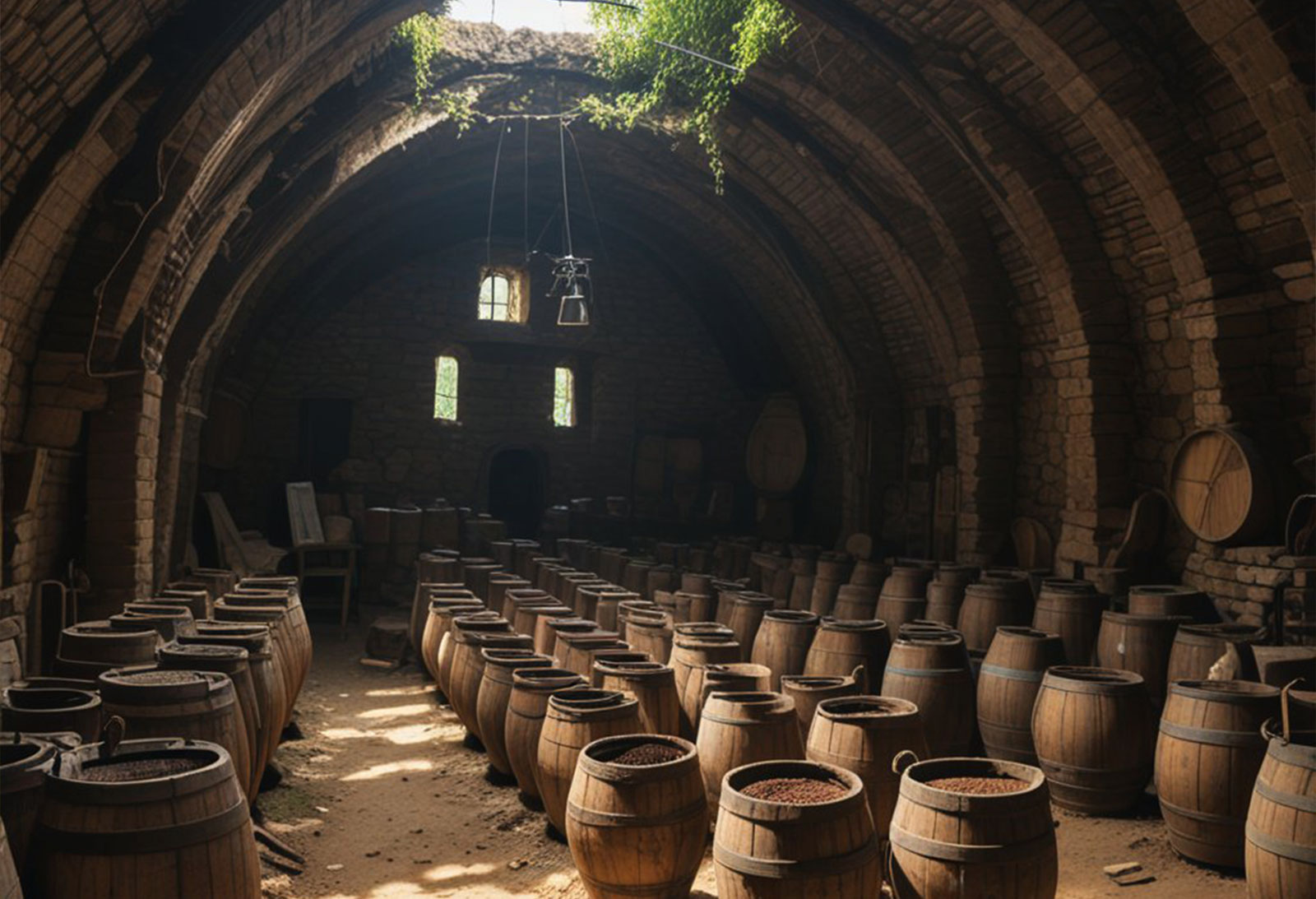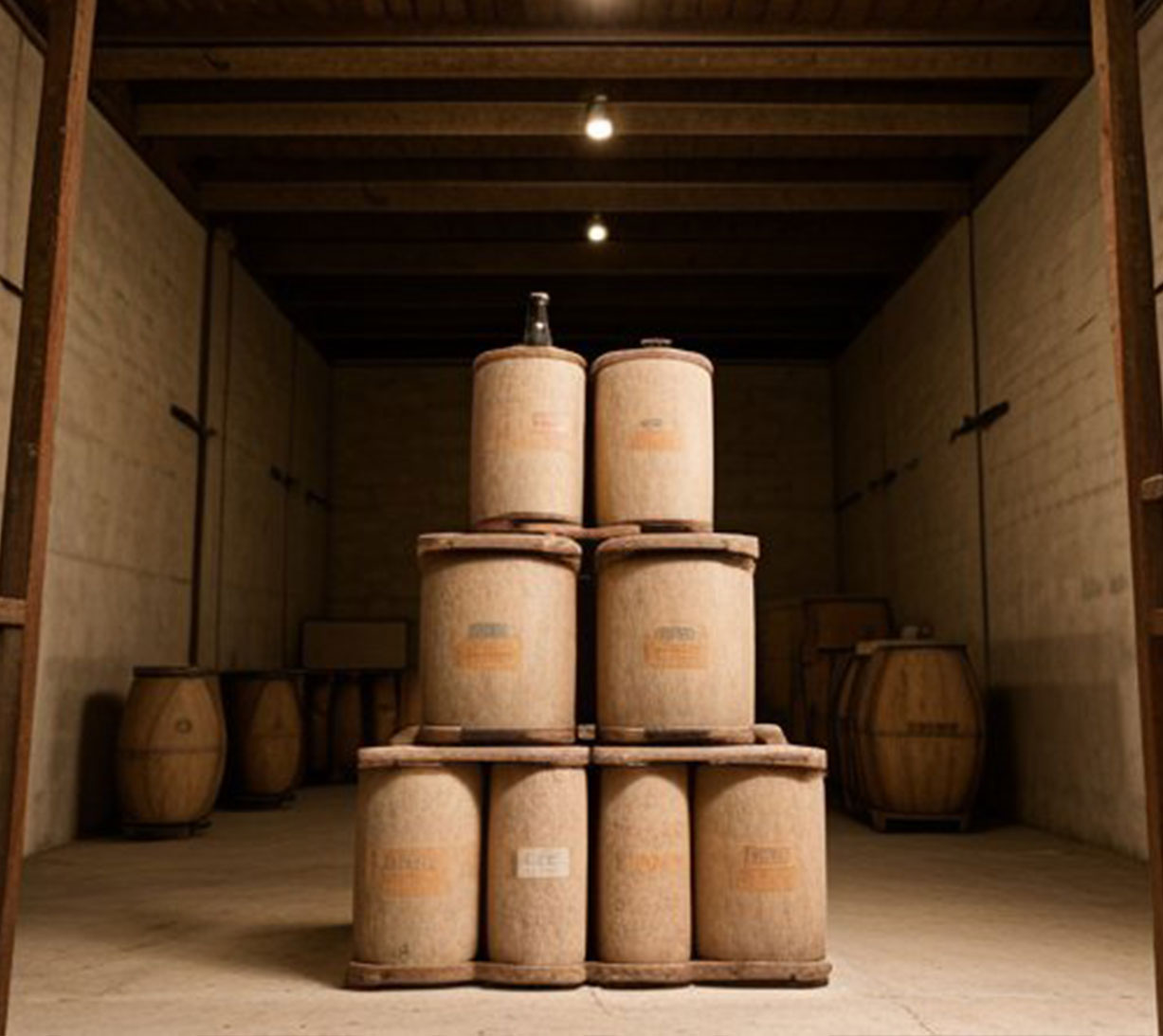Georgia is recognized as the “Cradle of Wine”, with winemaking traditions dating back over 8,000 years. Archaeological discoveries, including ancient Qvevris (clay vessels), unearthed in Neolithic settlements reveal that Georgians were the first to develop winemaking techniques. These early winemakers used Qvevris to ferment and store wine underground—a practice that remains central to Georgia’s winemaking traditions today. The cultivation of grapes and the art of wine fermentation were deeply embedded in the culture of the time, and wine was an integral part of social and religious life.


By 2000 BC, during the Bronze Age, Georgians advanced their winemaking techniques, moving from wild grapes to cultivated vineyards. The fertile valleys, particularly those near the Caucasus Mountains, became the perfect setting for growing grapevines. Structured viticulture emerged, with grape cultivation becoming a key aspect of daily life, agriculture, and religious practices. This era marks the origins of organized vineyard systems, with early winemakers refining their craft.
Georgia’s Golden Age (from the 6th to the 11th century) witnessed the flourishing of viticulture. With the rise of Georgia’s feudal system, noble families established large vineyards and advanced winemaking techniques. During this period, Georgia developed famous grape varieties like Saperavi and Rkatsiteli, which remain essential to Georgian winemaking today. This era also saw the establishment of wine cellars across the regions of Kakheti, Kartli, and Imereti, ensuring the mass production and refinement of wine.


Georgia’s strategic position on the Silk Road facilitated the spread of Georgian wine to neighboring regions such as Persia, Armenia, and the Byzantine Empire. Georgian wines, especially those fermented in Qvevris, gained international renown for their unique flavors and high quality. Foreign traders and travelers frequently praised Georgian wine, helping to establish it as a major export. This period marked the height of Georgia’s wine trade, with its wines becoming highly sought after across various markets.
Despite invasions and domination by the Ottoman and Persian Empires, Georgian winemaking endured. Many vineyards were destroyed, yet Georgian vintners preserved their craft in secret, maintaining the centuries-old Qvevri winemaking method. Local communities continued to pass down traditional knowledge of winemaking, ensuring that the practice survived. This period is a testament to the resilience of Georgian culture and its deep connection to wine.


Incorporated into the Russian Empire during the 19th century, Georgia saw a resurgence in winemaking, with large-scale production reemerging. This period marked significant modernization in winemaking techniques, with more structured vineyard management and grape cultivation. Georgian wine became highly popular in Russian markets, further solidifying Georgia’s reputation as a producer of exceptional wines. The industry expanded significantly, introducing new methods and technologies while maintaining the essence of traditional winemaking.
Under the Soviet Union, Georgia became the primary supplier of wine to the entire Soviet bloc. Mass production methods were introduced, focusing on quantity rather than quality. Despite this, many Georgian vintners worked tirelessly to preserve ancient methods like the Qvevri fermentation, which survived in local villages. These vintners passed down their knowledge through generations, ensuring that the traditional methods remained intact even as industrialization dominated much of the wine industry.


With the fall of the Soviet Union in 1991, Georgia’s wine industry experienced a dramatic renaissance. Small, family-run wineries revived traditional techniques and focused on quality, craftsmanship, and authenticity. Georgia began to reclaim its winemaking heritage, with international recognition following. In 2013, UNESCO officially recognized the ancient Qvevri winemaking method as part of the Intangible Cultural Heritage of Humanity, boosting global interest in Georgian wines.
Our journey is a tribute to the 8,000-year legacy of Georgian winemaking, and we invite you to join us in celebrating this remarkable history—one glass at a time. Experience the essence of Georgia’s past, present, and future with Georgian Legacy.
Today, Georgia boasts over 500 native grape varieties and is experiencing a winemaking revival. Georgian wines, particularly those made using Qvevris, are gaining international acclaim for their bold flavors, natural fermentation methods, and their deep cultural roots. The country’s winemaking industry is a blend of ancient practices and modern techniques, with a growing number of artisanal producers crafting premium wines that reflect Georgia’s rich winemaking history. Georgian wines are increasingly recognized for their unique character, driven by the interplay of tradition, terroir, and innovation.

The timeline of Georgian winemaking concludes with the modern revival, a resurgence that presents exciting opportunities for consumers to connect with this ancient heritage. Today, by choosing Georgian Legacy wines, you become part of a tradition that spans over 8,000 years. Each bottle represents not only the artistry of winemaking but also the deep cultural roots and stories that have shaped Georgia’s identity as the Cradle of Wine.
When you savor a glass of our wine, you’re not just enjoying a beverage; you’re experiencing the culmination of centuries of craftsmanship and dedication. Each wine we produce is made from indigenous grape varieties, some of which are found nowhere else in the world. With over 500 unique grape varieties thriving in Georgia, our portfolio offers an incredible range of flavors and styles, inviting you to explore the diverse terroirs of our ancient land.
Unique Tasting Experiences: Georgian Legacy wines provide a unique tasting journey that allows you to experience the rich flavors and complexities that have been cultivated over generations. Whether you choose our bold Saperavi, aromatic Rkatsiteli, or complex Tsinandali, you will encounter flavors that reflect the history and heritage of Georgia. Each sip transports you back to the sun-kissed vineyards of Kakheti, where ancient winemaking traditions meet modern craftsmanship.